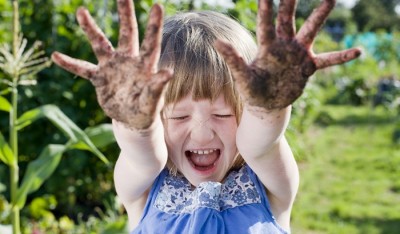We know gardening is good for all ages, but how do we spark our children’s interest? Usually kids plus dirt equals disaster, but in this case, it could very well be what is needed to encourage a life-long love of gardening. What are some strategies to get our children interested, and how can we inspire them to join us in the garden?
Here are some ideas:
1. Keep It Simple
To kindle your children’s interest in gardening, start in the kitchen. Let the children pick and taste fresh fruits and vegetables from the garden. Involve them in planning meals and going grocery shopping. By preparing food, they will become more interested in the process of growing it. Make smoothies and let the children taste the flavors of combined fruits and veggies.
2. Give Children their Own Garden Space
You can create gardens for year-round enjoyment. You can start plants indoors, or even grow plants in your home throughout the winter. Involve children in the planting of the garden. Have a list of crops, especially fast-growing ones, for the children from which to choose. Radishes are a good choice as they germinate quickly so your little ones won’t have to wait long to see the fruits (or in this case, the vegetables) of their labor. They will love checking out “their spot” in the garden and watching their crops grow. It gives a sense of accomplishment and responsibility.
Order your 2015 Heirloom Solutions seed catalog and get $20 in your account!
3. Assign Age-Appropriate Tasks
Different ages of children will have distinct abilities and expectations. They will learn various lessons at different times. The very young will need supervision and help while older children will be more physically capable. Watering, harvesting and planting are simple but enjoyable tasks for small children. Older children can help plan and design the garden spaces. They can do more of everything: carrying, planting, mulching and pruning. Other activities you can adjust for different ages are repotting and replanting, weeding, gathering seeds, composting and spreading fertilizer. Of course, you can include all ages in every part of the garden, but just be aware of ages and abilities.
4. Encourage Children to Dig/Play in the Dirt

Image source: ofdesign.net
Set a routine to visit and care for the garden. Take your children to the local farmer’s market. Be a role model, set a good gardening example and don’t give up. Show them the proper way to dig, mulch, plant crops and spread fertilizer. Let them play in the dirt. They will notice the difference between garden dirt and “regular” dirt.
5. Grow Interesting Crops
Grow crops like tomatoes, sunflowers, corn, pumpkins and strawberries. These are interesting because they are very visible and easily picked. They also add color to the garden. Berries and melons are good choices, too. Those fruits and vegetables are fun ideas because they can be easily eaten raw or cooked, as a snack or part of a meal. They are also easily available and in reach of little hands.
Try to grow plants with a variety of textual and sensory qualities to include the five senses. For touch, snapdragons, lamb’s ear and aloe vera offer different textures. Basil, peas, rosemary and strawberries offer an assortment of tastes, as well as carrots and cherry tomatoes. Plants like lavender, mint, jasmine and sweet peas add multiple smells. How do you plant for sound? Corn, bamboo and different grasses are examples of plants that make noise in the wind. Bright colored vegetables like rainbow chard and sunflowers always brighten a garden and are easily seen.
New Natural Fertilizer Doubles Garden Production!
6. Use Trellises or Teepees for Vines (Beans and Peas)
Trellises and teepees make a visual interest in the garden, and make it easy to pick. Children can watch the plants grow and enjoy seeing how the vines follow the supports. A teepee supporting peas or pole beans also makes a great hiding place for kids to play – with an abundant and healthy snack within arm’s reach!
7. Add Decorations
By adding garden decorations like a scarecrow, bird bath or garden gnomes, it gives character and interest to the garden. The decorations can be used as markers, as well. A scarecrow or bird bath have practical uses which can be explained to the children, so they add an educational element.
Remember to keep child garden safety in mind. Make sure the garden is safe and suitable equipment is used. This is important to make the gardening experience exciting and pleasant. Use the correct size of tool for each child, as you want to make sure no one is overwhelmed and that there is no unnecessary strain – or injury. Any chemical or fertilizer sprays should be placed out of reach, and there should be safe storage for all tools and equipment. Check your fences and gates to make sure they are secure, and never leave buckets with water near toddlers or small children. This being said, make sure there are always drinks available, as well as shade and sunscreen. Children should have proper gardening clothes on, including hats and boots.
Gardening is fun for all ages. Including children in it adds to the enjoyment and passes on the love of nature and a healthy lifestyle. So buy those kids some shovels and rakes and enjoy the upcoming gardening season.
What tips would you add to the list? Share them in the section below:
 Off The Grid News Better Ideas For Off The Grid Living
Off The Grid News Better Ideas For Off The Grid Living





